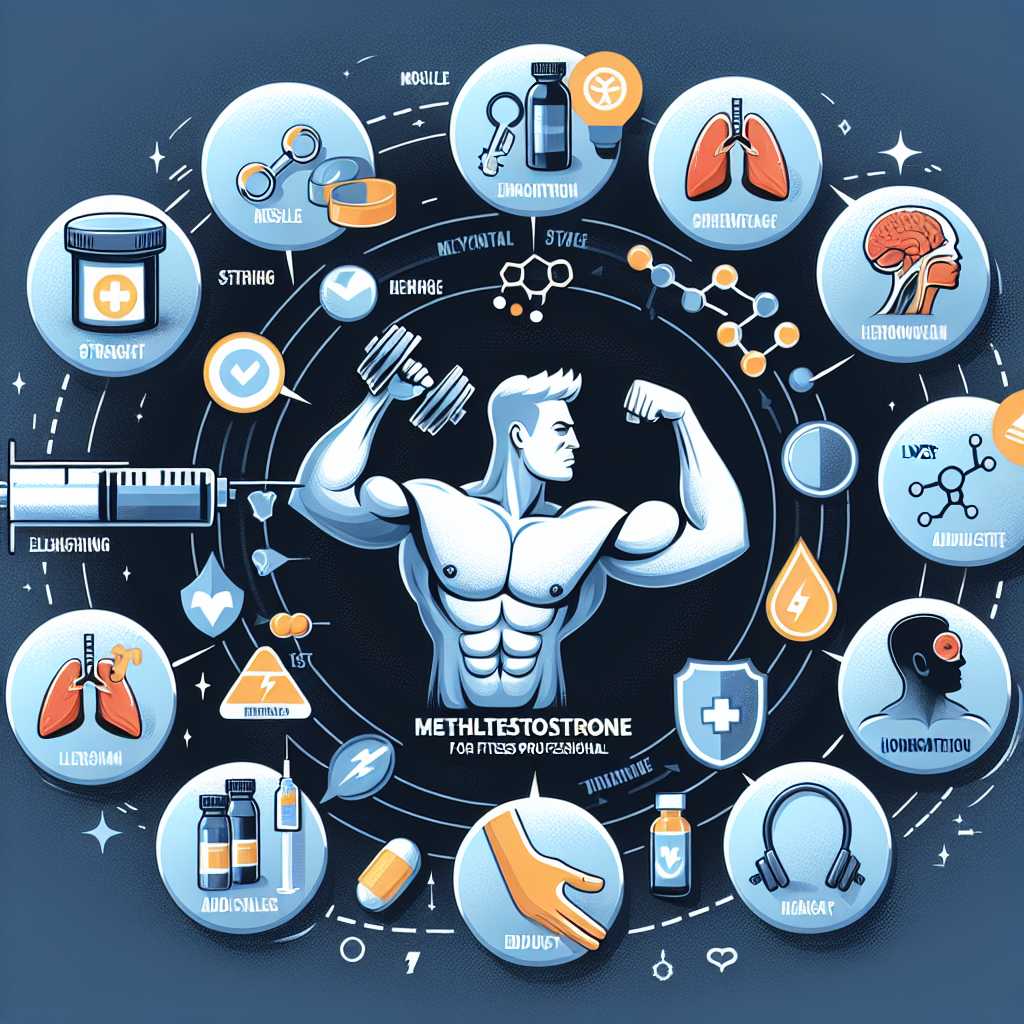-
Table of Contents
The Pros and Cons of Methyltestosterone Use in Fitness Professionals
Methyltestosterone, also known as 17α-methyltestosterone, is a synthetic androgenic-anabolic steroid that has been used for decades in the treatment of hypogonadism and delayed puberty in males. However, in recent years, it has gained popularity among fitness professionals for its potential to enhance athletic performance and muscle mass. As with any performance-enhancing substance, there are both pros and cons to its use. In this article, we will explore the pharmacokinetics and pharmacodynamics of methyltestosterone, as well as the potential benefits and risks associated with its use in fitness professionals.
Pharmacokinetics and Pharmacodynamics of Methyltestosterone
Methyltestosterone is a synthetic derivative of testosterone, the primary male sex hormone. It is orally active and has a half-life of approximately 4 hours (Kicman, 2008). Once ingested, it is rapidly absorbed into the bloodstream and metabolized by the liver. The main metabolites of methyltestosterone are 17α-methyl-5α-androstan-3α,17β-diol and 17α-methyl-5β-androstan-3α,17β-diol, which are excreted in the urine (Kicman, 2008).
Pharmacologically, methyltestosterone acts as an androgen receptor agonist, binding to and activating androgen receptors in various tissues throughout the body. This results in an increase in protein synthesis, leading to muscle growth and strength gains (Kicman, 2008). It also has androgenic effects, such as increased sebum production and hair growth, as well as virilizing effects in females (Kicman, 2008).
Benefits of Methyltestosterone Use in Fitness Professionals
The main reason why fitness professionals may turn to methyltestosterone is its potential to enhance athletic performance and muscle mass. Studies have shown that anabolic steroids, including methyltestosterone, can increase muscle mass and strength when combined with resistance training (Hartgens & Kuipers, 2004). This can be especially beneficial for athletes who need to improve their performance in sports that require strength and power, such as weightlifting and sprinting.
In addition to its anabolic effects, methyltestosterone has also been shown to improve recovery time and reduce muscle damage after intense exercise (Hartgens & Kuipers, 2004). This can be particularly useful for athletes who engage in high-intensity training and competitions, as it can help them bounce back faster and perform at their best.
Risks and Side Effects of Methyltestosterone Use
While the potential benefits of methyltestosterone use may seem appealing, it is important to note that there are also significant risks and side effects associated with its use. These include but are not limited to:
- Cardiovascular complications, such as high blood pressure and increased risk of heart attack and stroke (Hartgens & Kuipers, 2004).
- Hepatotoxicity, or liver damage, due to the oral administration and metabolism of methyltestosterone (Hartgens & Kuipers, 2004).
- Androgenic side effects, such as acne, hair loss, and virilization in females (Hartgens & Kuipers, 2004).
- Suppression of natural testosterone production, leading to potential infertility and other hormonal imbalances (Hartgens & Kuipers, 2004).
Furthermore, the use of methyltestosterone is prohibited by most sports organizations and is considered a doping agent. Athletes who are caught using it may face serious consequences, including disqualification and suspension from competitions.
Expert Opinion
While the use of methyltestosterone may seem tempting for fitness professionals looking to improve their performance and physique, it is important to consider the potential risks and side effects associated with its use. As an experienced researcher in the field of sports pharmacology, I strongly advise against the use of methyltestosterone or any other anabolic steroid for non-medical purposes. The potential benefits do not outweigh the potential risks, and there are safer and more sustainable ways to achieve fitness goals.
References
Hartgens, F., & Kuipers, H. (2004). Effects of androgenic-anabolic steroids in athletes. Sports Medicine, 34(8), 513-554.
Kicman, A. T. (2008). Pharmacology of anabolic steroids. British Journal of Pharmacology, 154(3), 502-521.

